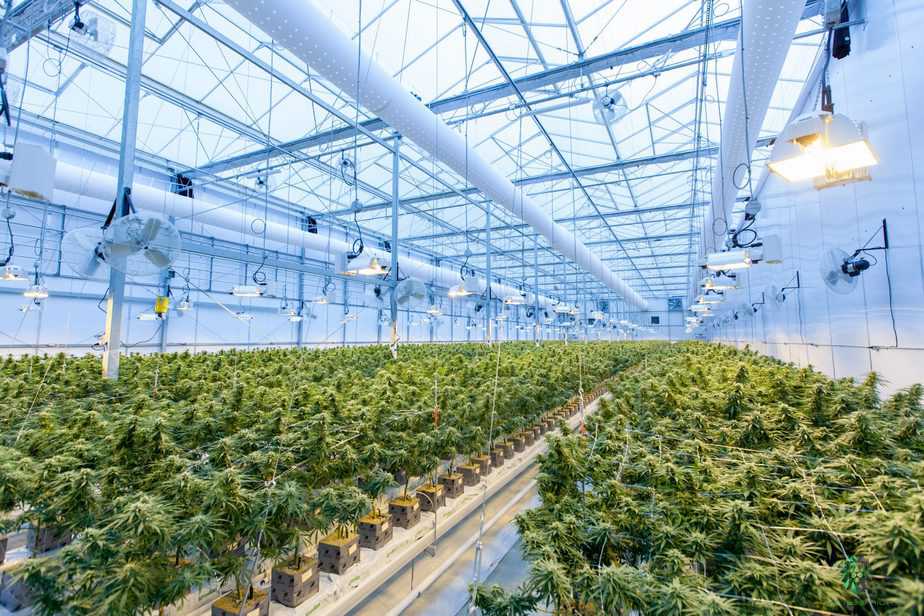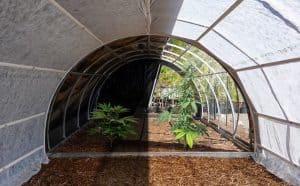For a greenhouse to be effective, it must have proper ventilation. The ventilation system is usually made up of vents and fans and acts as an exhaust chute, allowing air to circulate and permitting fresh air to enter.
So, do I need a fan in my greenhouse? Or, will enough vents do the trick?
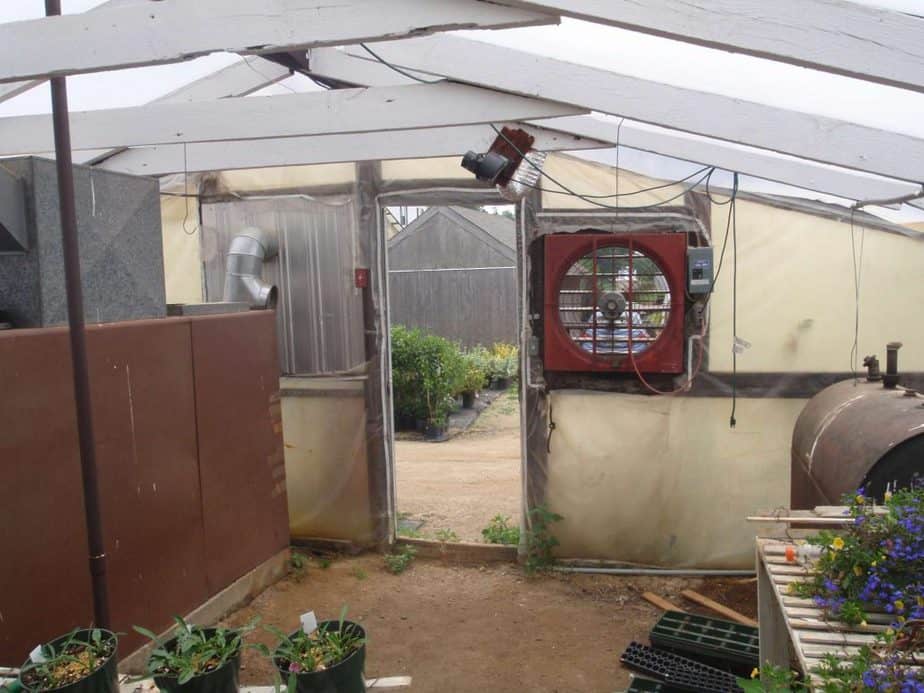
This article will explore why the fan in your greenhouse is so important as well as give you information on getting the optimal greenhouse fan for your needs.
The Need for Continuous Airflow in a Greenhouse
Plants respire by absorbing CO2 and releasing oxygen. Normally, this isn’t a concern for plants grown outdoors as the air circulates freely. However, the enclosed nature of the greenhouse means that the circulation of fresh air is limited. The low levels of CO2 would therefore be limiting your plants’ growth.
Moving air is also essential for stimulating plants to produce stronger cell walls. This leads to sturdier plants with stronger roots and stems.
Aiding and Improving the Pollination Process

Wind can pollinate outdoor plants by simply shaking and releasing the pollen, which is essential for self-pollinating plants like tomatoes. Wind can also carry the pollen from one plant to another.
Inside a greenhouse, this effect needs to be imitated by exhaust fans.
By optimizing the airflow rate, you can obtain plants that produce a higher quantity of fruits.
Regulating the Temperature of Your Greenhouse
If your greenhouse is stuffy, it’ll be prone to overheating. This will stunt plant growth and can cause them to wilt and die.
The optimum temperature for photosynthesis is usually around 25 °C. There are plants (like tomatoes) that are extremely heat-sensitive and can be affected by minor overheating. Therefore, when the temperature increases beyond a specific limit, they may wilt and die.
If the vents are placed strategically, they can maintain steady temperatures throughout the whole greenhouse. However, the vents are not enough.
Vents are limited in the amount of heat that they can allow to escape. Exhaust fans increase heat exchange by pushing stale, hot air out and allowing cool, fresh air to enter.
Indeed, there are other ways to cool down your greenhouse. For example, on scorching days, you can use an evaporative cooler. However, this can incur additional costs.
Controlling Humidity for Pest Control and Prevention
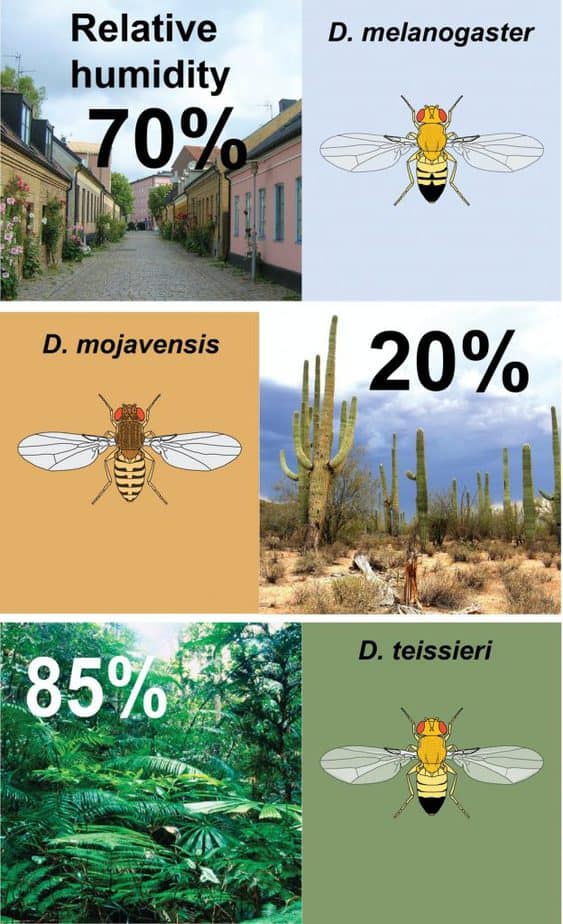
High levels of humidity in greenhouses can be detrimental to your plants’ health. Big swings in outdoor temperature can cause moisture to build up in the greenhouse. This is most common in spring and fall. It can also happen in the winter when there’s a large difference between indoor and outdoor temperatures.
This moisture is harmful to the plants because it collects on the ceilings of the greenhouse and drips on the plants. This causes the plant foliage to become moist and susceptible to attack by mildew, fungi, and pests.
A humidifier or dehumidifier for your greenhouse can definitely help to get those humidity levels under control.
Vents and fans allow you to control the humidity level and keep your plants dry, which prevents disease-harboring organisms from damaging your plants. To increase your ventilation system’s efficacy, you can also invest in a hygrometer (a device that measures humidity) and some automatic greenhouse vents.
Determining the Ideal Fan Placement
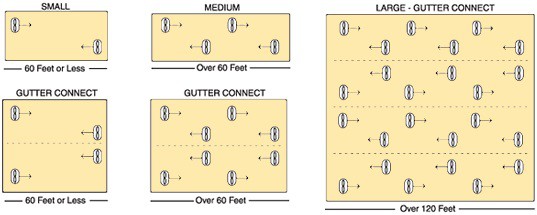
For good air circulation, airflow should be horizontal. The first fan should be placed 10-15 inches away from the wall at one end. Subsequent fans should be located 40-50 inches apart to keep air mass moving.
If plants are placed on the floor or benches, the fans should be placed 7-8 inches above the ground.
Greenhouses with hanging baskets should have a fan placed above or below the baskets. This ensures that the direct air stream doesn’t dry the foliage.
Why Is Fan Maintenance Important?
It’s essential to clean the fans several times a year. This is critical because fan guards and motor casings can pick up a considerable amount of dust from the air, which will directly impair the airflow.
Calculating the Correct Fan Capacity for Your Greenhouse
It’s crucial to purchase a fan that has an adequate capacity to ensure an efficient ventilation system. The size and power of the fan are highly dependent on the size of your greenhouse.
Fan capacity is measured in terms of the total cubic feet of air that is exchanged per minute (CFM).
If the greenhouse is 15 inches wide, you should determine your greenhouse area and multiply that by 5 to get the total CFM. For example, if your greenhouse is 15 inches wide and 100 inches long, your total capacity should be 7,500 CFM.
If your greenhouse is 22, 26, 30, or 34 inches wide, the same method for determining fan capacity is used except that the area is multiplied by 7. For example, if your greenhouse is 30 inches wide and 100 inches long, your total capacity should be 21,000 CFM.
If your greenhouse has a gutter, the calculations differ slightly. In this case, you should add three feet to your gutter height and multiply that value by your greenhouse area. For example, if your gutter height is 7 inches and your greenhouse has a width of 20 inches and length of 100 inches, your CFM will be calculated as follows: 20x100x(7+3)= 20,000 CFM.
How Does Fan Horsepower Impact Cost?
Fans with lower horsepower can help cut down on costs. They provide the necessary air movement while also using less electricity. These fans are capable of moving air with less resistance than an exhaust fan.
Additionally, you can save up to one-third of your electricity by using a permanent split capacitor motor for your fans.
Conclusion

In conclusion, having a fan is vital for adequate ventilation of your greenhouse. Therefore, it’s significant for producing healthy plants that yield large quantities of fruits. The fan helps maintain a continuous flow of air, aids pollination, controls temperature and humidity while also preventing pests from damaging the fruit.
However, to ensure that the fans are efficient, it’s essential to place them correctly. It’s also critical that the upkeep of the fans is pristine. If the fans aren’t maintained, their efficiency may drop as they get damaged by dust in the air or moved from their intended position.

